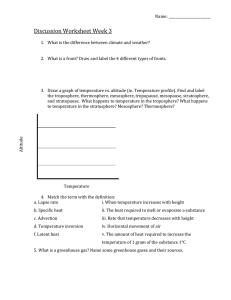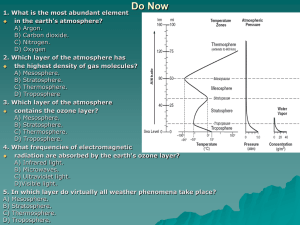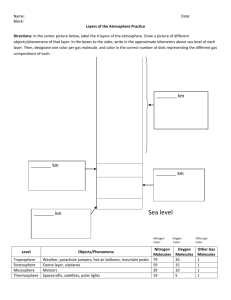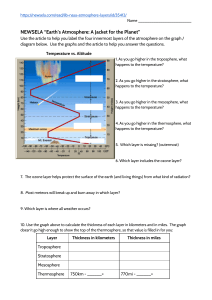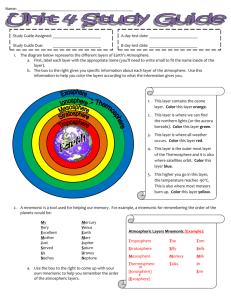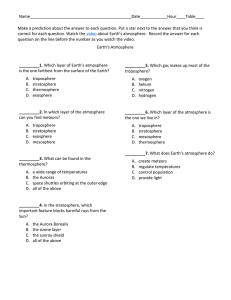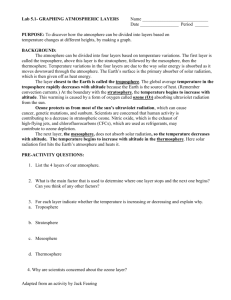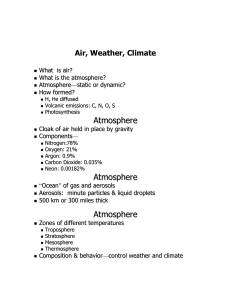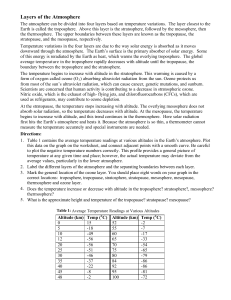Chapter 17 Atmosphere Vocabulary
advertisement
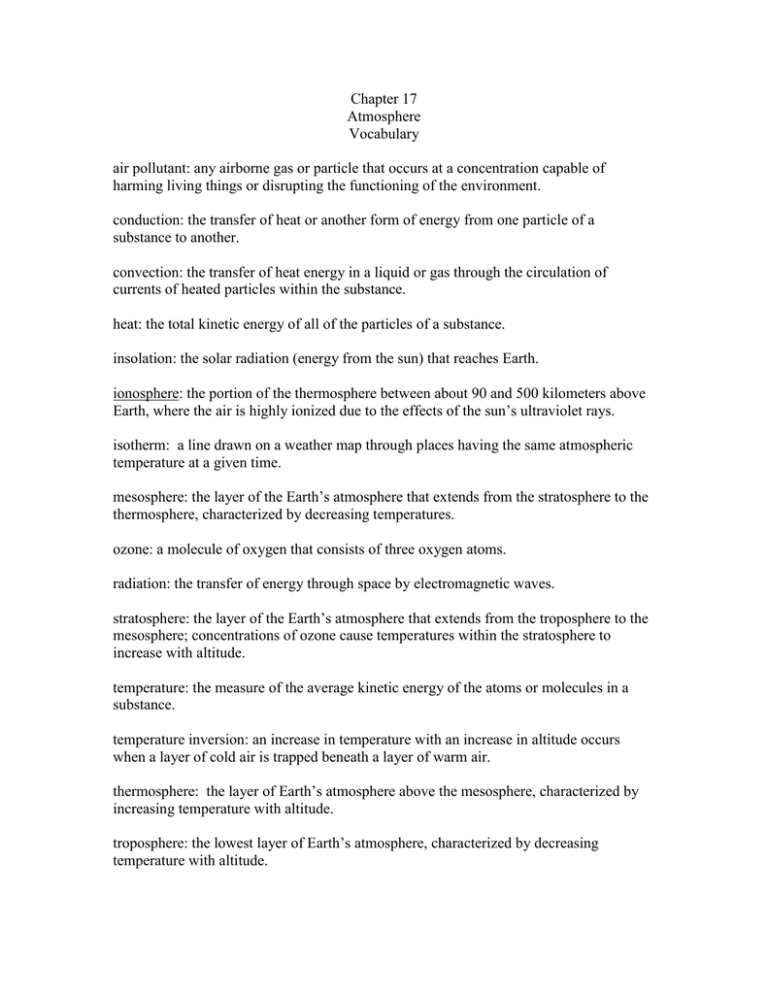
Chapter 17 Atmosphere Vocabulary air pollutant: any airborne gas or particle that occurs at a concentration capable of harming living things or disrupting the functioning of the environment. conduction: the transfer of heat or another form of energy from one particle of a substance to another. convection: the transfer of heat energy in a liquid or gas through the circulation of currents of heated particles within the substance. heat: the total kinetic energy of all of the particles of a substance. insolation: the solar radiation (energy from the sun) that reaches Earth. ionosphere: the portion of the thermosphere between about 90 and 500 kilometers above Earth, where the air is highly ionized due to the effects of the sun’s ultraviolet rays. isotherm: a line drawn on a weather map through places having the same atmospheric temperature at a given time. mesosphere: the layer of the Earth’s atmosphere that extends from the stratosphere to the thermosphere, characterized by decreasing temperatures. ozone: a molecule of oxygen that consists of three oxygen atoms. radiation: the transfer of energy through space by electromagnetic waves. stratosphere: the layer of the Earth’s atmosphere that extends from the troposphere to the mesosphere; concentrations of ozone cause temperatures within the stratosphere to increase with altitude. temperature: the measure of the average kinetic energy of the atoms or molecules in a substance. temperature inversion: an increase in temperature with an increase in altitude occurs when a layer of cold air is trapped beneath a layer of warm air. thermosphere: the layer of Earth’s atmosphere above the mesosphere, characterized by increasing temperature with altitude. troposphere: the lowest layer of Earth’s atmosphere, characterized by decreasing temperature with altitude.
